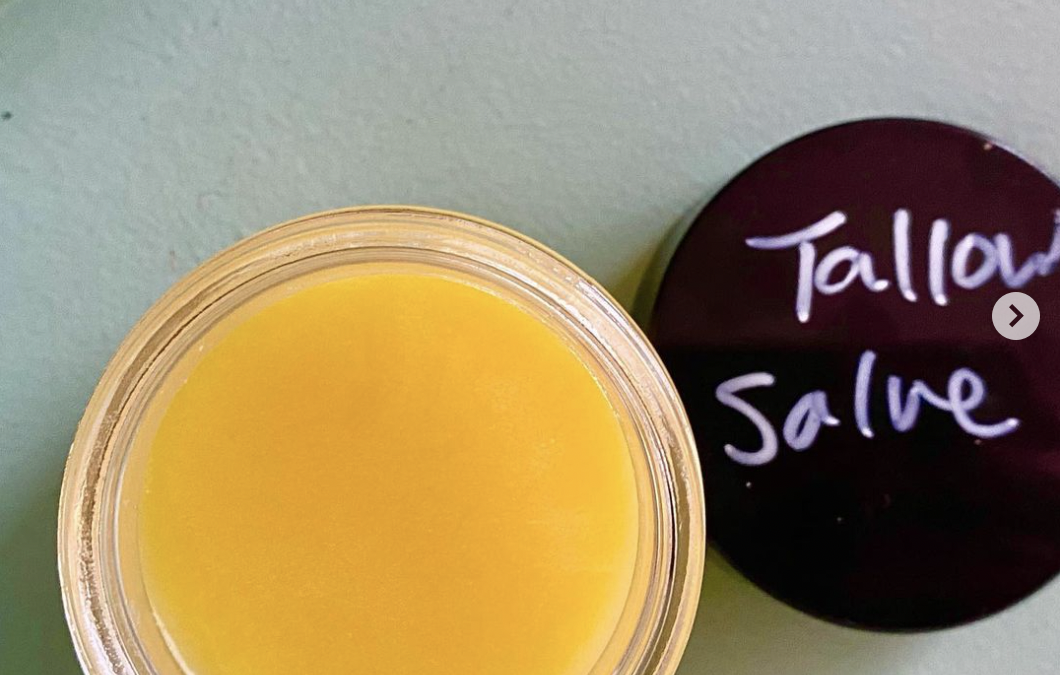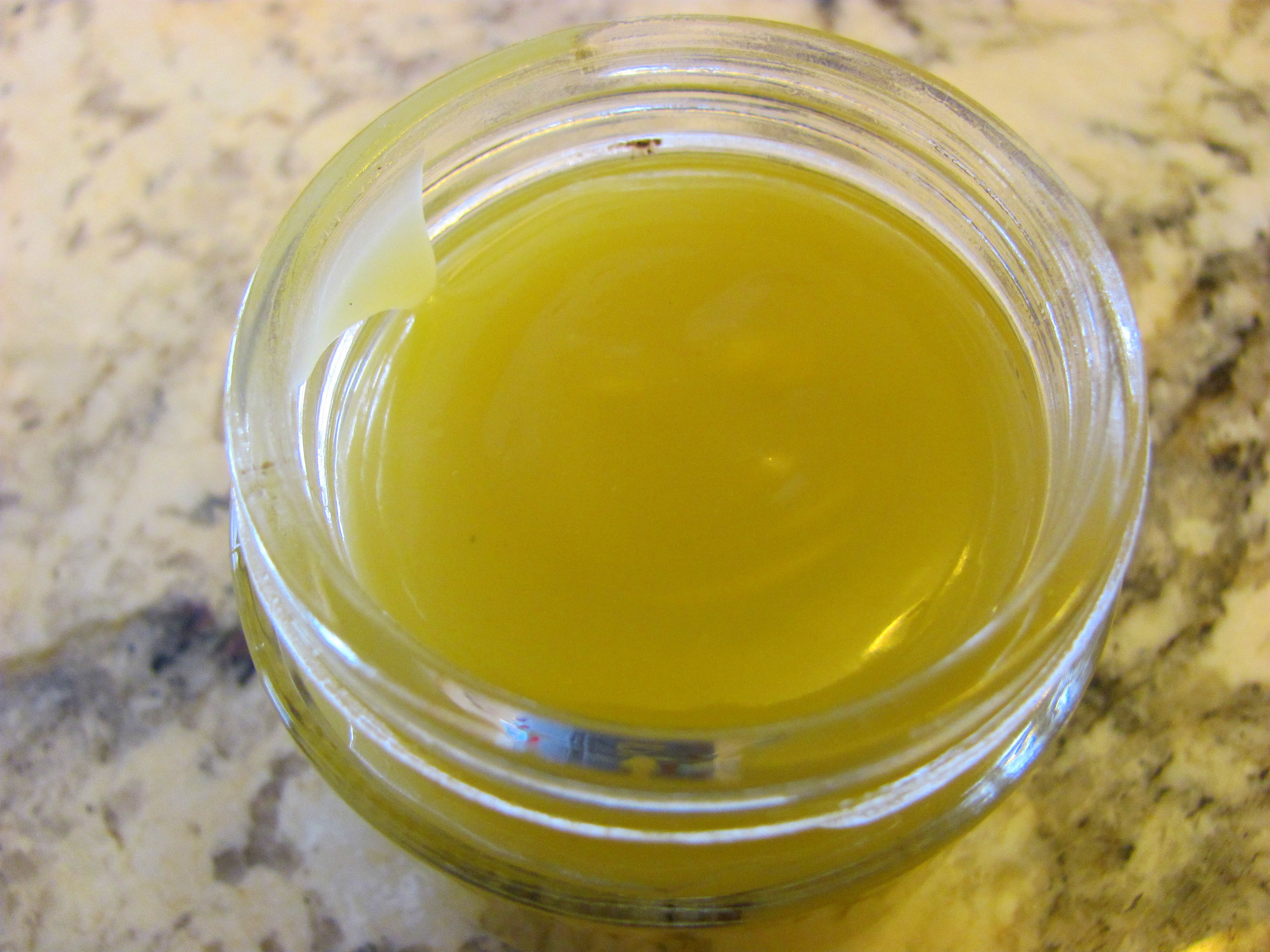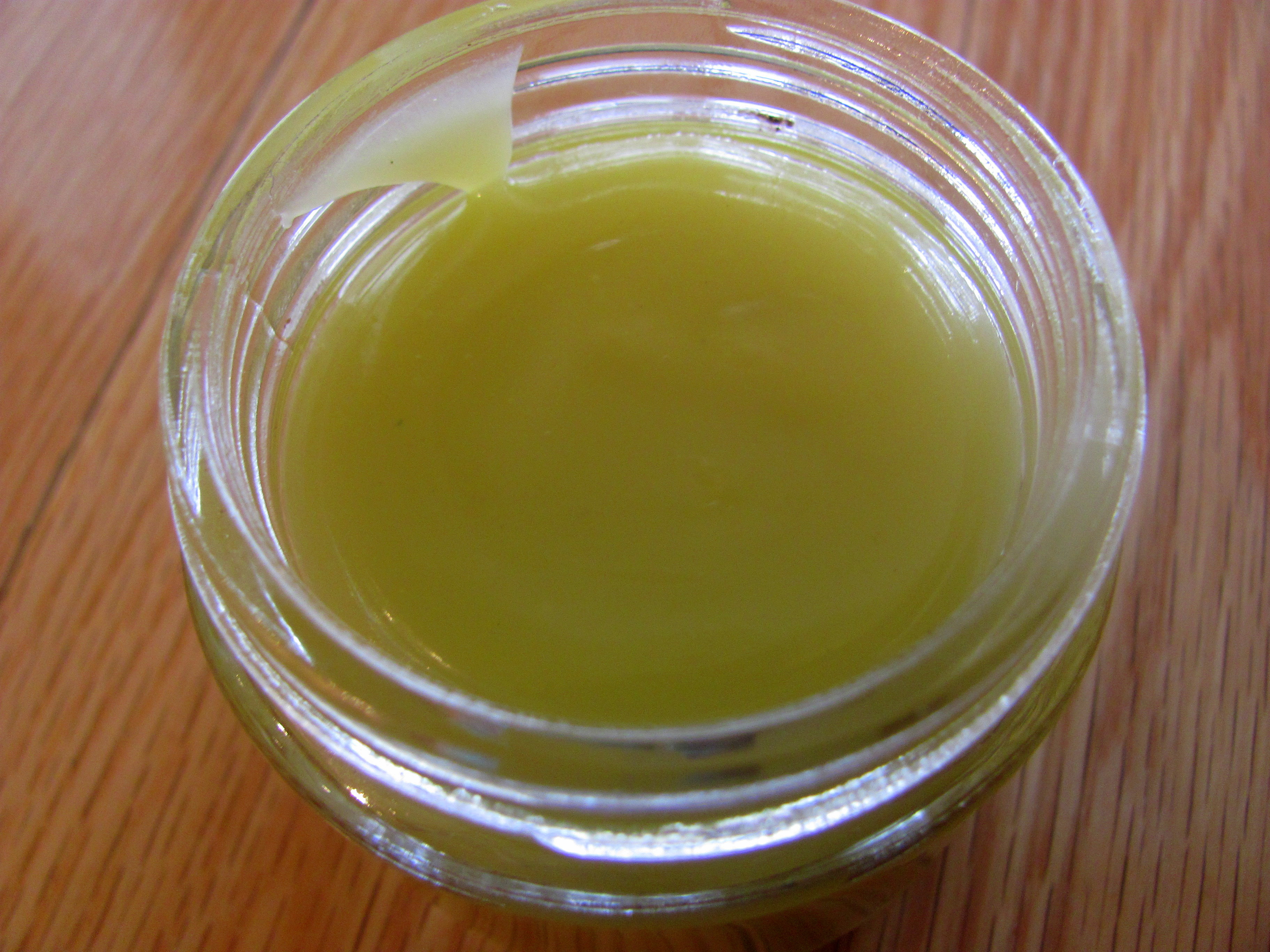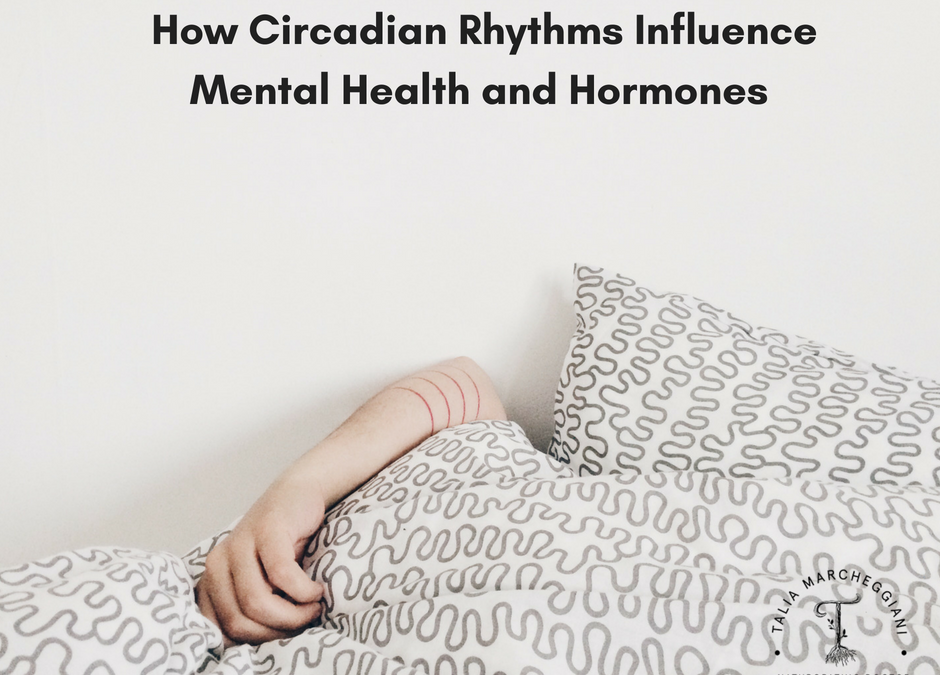
by Dr. Talia Marcheggiani, ND | Aug 19, 2018 | Anti-aging, Anxiety, Autoimmune, Depression, Detoxification, Emotional Wellness, Endocrinology, Health, Hormones, Medicine, Mental Health, Mind Body Medicine, Nature Cure, Paleo, Self-care, Sleep, Stress
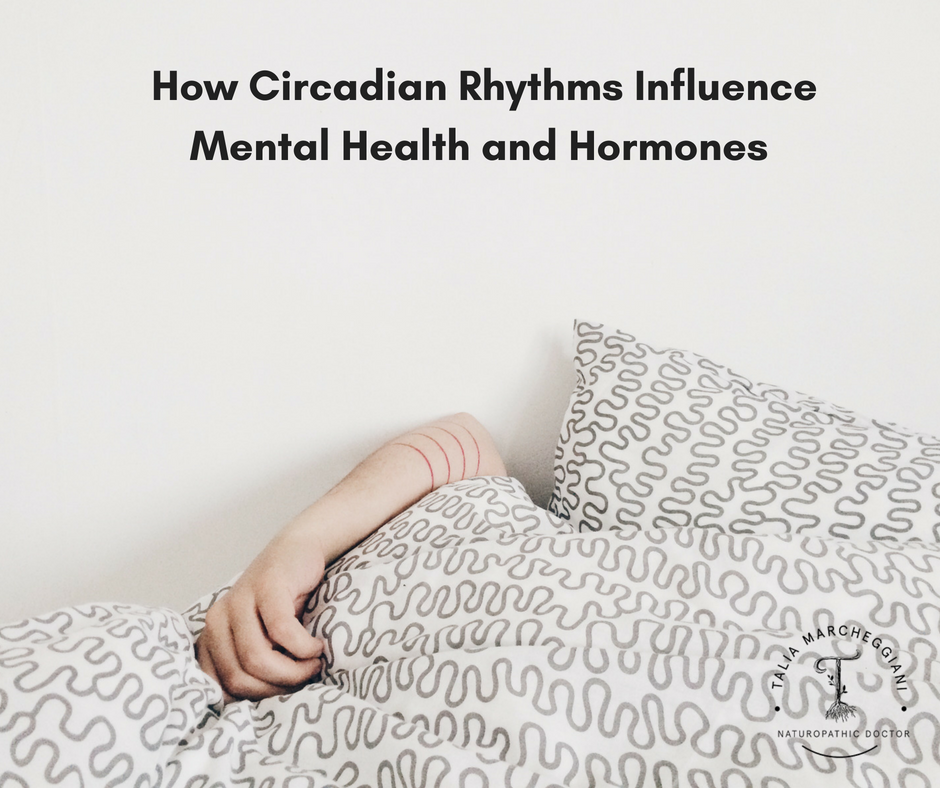 Gorf is a man of his age, which, in his case, happens to be the Stone Age.
Gorf is a man of his age, which, in his case, happens to be the Stone Age.
Yes, Gorf is a caveman.
And, perplexingly, Gorf suffers from insomnia.
Gorf wakes up sluggish, long after the sun has risen, wishing he had a snooze button to smash.
He struggles through the day, exhausted. In the early afternoon, he sucks glycogen from the raw meat of a fresh kill to get an extra blood sugar boost.
Gorf prays for someone to discover coffee and refined sugars so that he can join the ranks of modern zombies getting through their 3 pm slumps with artificial pick-me-ups.
When the sun sets, Gorf feels depleted, but also restless and wired. He frustratedly tosses on his bed of mammoth skins beside the dying embers of his campfire while his family snoozes on.
Wide awake at 2 am, Gorf knows that the next morning he’ll begin the cycle again, his body completely out of sync with the Earth’s rhythms. Such is the cursed life of a Prehistoric Insomniac.
If this story seems preposterous, it’s because it probably is. Whatever we imagine prehistoric humans to be, insomniacs is not high on the list.
Those of us who have spent a night outside—whether it was a weekend camping trip or longer—might remember how deeply we slept under the darkness of the starry night sky and how refreshed we woke when the sun began to warm our faces in the early morning.
The closer we get to nature, the better our bodies seem to align with the Earth’s light and dark rhythms.
Now, if we took poor Gorf, dressed him in a suit, and dumped him in a desk chair in an office building in any major modern city, we might believe his claim to insomnia.
Now that Gorf is one of us, his eyes are exposed to bright lights at night as he slogs away at his computer, answering emails, or surfing social media pages into the late hours.
During the day, Gorf now spends his time indoors, where light exposure is 400 times less than that of a bright sunny day.
On bright days when he has a chance to get outside, Gorf protects his fragile eyes with dark glasses.
Welcome to the modern industrial lifestyle, Gorf. Don’t forget to help yourself to the coffee and cookies.
Our Body’s Circadian Rhythms
Our body runs on a 24 hour clock, which is orchestrated by an area in the hypothalamus of the brain called the Suprachiasmatic Nucleus (which we will refer to as “the SCN” from now on).
Our organs, body tissues and cellular processes, from our digestive function, hormones, mood, body temperature, metabolism, sleepiness and wakefulness, cellular repair, to detoxification, among others, have different objectives for certain times of day. The SCN coordinates these functions with the Earth’s daily cycles.
The SCN runs without the aid of outside influence, however several zeitgebers, German for “time givers”, or environmental cues, tell our internal clock what time of day it is to sync our internal and external worlds. The most important zeitgeber is light, which directly activates the SCN through a pathway that connects the retina in our eyes to the hypothalamus (the retinohypothalamic tract).
In our bodies, timing is everything. The more we are able to sync our cycles with the environment, the better our body organs function. Working against circadian rhythms by engaging in activities like sleeping and eating at the wrong time of day can negatively affect our health, decrease our lifespan, and make us miserable (like poor, sad Gorf in his dimly lit office).
The digestive system, for example, is wired to break down, absorb and convert food energy into fuel during the day and repair and regenerate itself at night.
At night, the pineal gland, located in the brain, releases melatonin, a hormone produced in the absence of light, to help us sleep. However, exposure to bright lights before bed can impede the natural release of melatonin, preventing restful sleep.
Even pain and cancer growth follow a circadian rhythm.
Science shows that healthy circadian rhythms equal optimal metabolic health, cognitive function, weight, energy levels, cardiovascular health, immune function, digestive health, coordination and mental health. Regulating our circadian rhythms can increase our health-span.
Our Liver, Muscles and Adrenal Glands Also Have Clocks
While the SCN is the chief executive officer of the circadian cycle, other organs, such as the liver, muscle and adrenal glands, help regulate our body’s rhythms through peripheral clocks.
These clocks register cues from the environment and report back to the SCN. In turn, the SCN tells the organs what jobs they are supposed to be performing according to the time of day.
Dr. Satchin Panda, PhD, a researcher at the Salk Institute, is discovering how important our eating times are for setting our circadian clock.
The first bite of our breakfast tells our liver clock to start making the enzymes and hormones necessary to digest our food, regulate our metabolism, and use the food we eat throughout the day to fuel our cells.
A few hours later, our digestive system requires relief from food intake to invest its resources into repair rather than spending precious resources on digesting food.
Dr. Panda found that restricting a “feeding window” to 8 to 12 hours in mice and human participants (for example, eating breakfast at 7 am and finishing dinner no later than 7 pm), allowed the system to digest optimally, left time for the system to repair itself at night, and also acted as a powerful circadian regulator.
New research suggests that food is a potent zeitgeber, which has the power to regulate our circadian rhythms. This suggests that eating at the right time of day can heal our adrenal glands and sleep cycles.
Fasting for 10 to 16 hours at night, or “Time Restricted Eating”, helps optimize health and increase lifespan in mice. In human participants, it improves sleep and results in modest weight loss.
Similarly, more research shows that eating before bed can lead to adverse health effects and cause us to gain weight.
According to Dr. Panda, we become more insulin resistant at night, which means that late-night snacking makes us more likely to store the calories we consume as fat.
Consuming calories in a state of insulin resistance can also predispose use to metabolic syndrome and type II diabetes.
In addition to light and food intake, rest and movement are important zeitgebers. Therefore, engaging in these activities at the right time of day has the potential to promote physical and mental health.
Circadian Rhythms and the Stress Response are Tightly Connected.
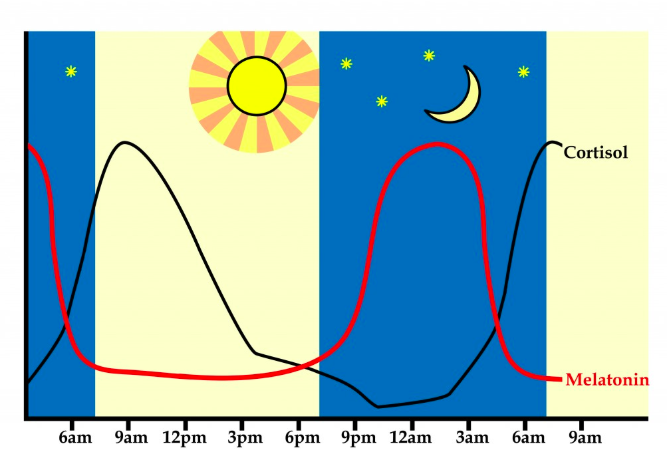 If the internet is any indicator, it seems that everyone is suffering from the modern illness of “adrenal fatigue”, or HPA (Hypothalamic-Pituitary-Adrenal) axis dysfunction
If the internet is any indicator, it seems that everyone is suffering from the modern illness of “adrenal fatigue”, or HPA (Hypothalamic-Pituitary-Adrenal) axis dysfunction
Because of the stress of our modern lifestyles, our adrenal glands and brains are no longer able to regulate the stress response.
This leads to a host of symptoms that wreck havoc on the entire body: fatigue, anxiety, sugar cravings, and insomnia. It also negatively impacts digestion, hormone production, and mood.
Our adrenal glands make cortisol, the “stress hormone”, a hormone involved in long-term stress adaptation but also in wakefulness, motivation, reward, and memory.
Deficiencies in cortisol signalling can result in issues with inflammation and depression. Too much cortisol floating around in the body can cause weight gain, cardiovascular issues, such as hypertension, and metabolic syndrome.
Cortisol has a circadian rhythm of its own. Our cortisol levels rise within an hour of waking; 50% of the total cortisol for the day is released in the first 30 minutes after we open our eyes. This rise in cortisol wakes us up. It allows us to perform our daily activities in a state of alert wakefulness.
Cortisol levels decline steadily throughout the day, dipping in the evening when melatonin rises.
A flattened or delayed rise in morning cortisol results in grogginess, brain fog and altered HPA axis function throughout the day. Elevated cortisol in the evening cause us to feel “tired and wired” and affect sleep. Waking at night, especially in the early morning between 2 and 4 am can be due to cortisol spikes.
Our adrenal glands help regulate our circadian rhythms through the production of cortisol. Both the adrenals and the SCN communicate with each other as early as 2 in the morning to ready the system to generate the waking response a few hours later.
Psychiatrist Dr. Charles Raison, MD says, “The most stressful thing you do most days is get up in the morning. Your body prepares for it for a couple of hours [before waking by activating] the stress system. The reason more people die at dawn [than any other time] is because it’s really rough to get up.”
Waking up is a literal stress on the body.
However, we need the stress response to get through our day effectively and healthy HPA axis function and optimal mood and energy are a result of properly functioning circadian rhythms.
Without these rhythms functioning properly we feel tired, groggy, tense, and depressed. Like Gorf, we need sugar and caffeine to help us through the day.
Circadian Rhythms Affect Our Mental Health
In nearly everyone I work with who suffers from anxiety, depression, or other mental health disorders, I see disrupted circadian rhythms and HPA axises.
Many of my patients feel exhausted during the day and wired at night. They have trouble getting up in the morning (or stay in bed all day) and postpone their bedtime. Most of them skip breakfast due to lack of hunger, and crave sweets after dinner, which further throws off the circadian cycle.
Lack of sleep can disrupt circadian rhythms leading to obesity, depression, diabetes and cardiovascular disease. Even two nights of shortened sleep can affect cortisol production and the HPA axis, worsening mood and energy levels.
Depression severity on the Hamilton Depression Rating Scale (HDRS) falls by 6 full points when sleep is restored, which is enough to bring a patient from moderate/severe depression to mild. In comparison, the standard medication SSRIs, like cipralex, only drop the HDRS by 2.
Bipolar disorder is particularly affected by a misaligned circadian clock. In an interview, Dr. Raison claims that a single night of missed sleep has brought on episodes of mania in his bipolar patients. Their moods level once the sleep cycle is restored.
Our mood is tightly connected to our circadian rhythms and sleep.
Circadian Rhythms and Chinese Medicine
Thousands of years ago, the Chinese developed the Theory of Yin and Yang to describe the dynamics nature, including the cycles of night and day.
Yin and yang (symbolized by a black-and-white circle with dots) represent the process of change and transformation of everything in the universe.
Yang, represented by the white part of the circle, is present in things that are hot, light, awake, moving, exciting, changing, transforming and restless.
Yin is present in material that is cold, dark, soft, inhibited, slow, restful, conversative, and sustaining.
Yin and yang are dependent on each other. Yin feeds into yang, while yang feeds and transforms into yin. Everything in nature consists of a fluctuating combination of these two states.
The circadian cycle transforms the yin night into the yang of daytime.
Yang zeitgebers such as food, light, and physical and mental activity, help stimulate yang in the body, which helps us feel energized, light and motivated.
Before bed, yin zeitgebers like darkness, rest and relaxation help our bodies transition into the yin of night, so that we can sleep restfully.
Lack of sleep and relaxation can deplete our body’s yin energy, causing yin deficiency. Individuals with yin deficiency feel fatigued, anxious, and hot, experiencing night sweats, hot flashes, and flushed skin. Conventionally, yin deficiency can look like burnout compounded by anxiety, or peri-menopause.
Out-of-sync circadian rhythms can result in yang deficiency resulting in morning grogginess, an insufficient rise in morning cortisol, and a failure to activate yang energy throughout the day.
Yang deficiency is characterized by the build-up of phlegm in the body, leading to weight gain, feelings of sluggishness, slow digestion, bloating, weakness, and feeling foggy, pale and cold. Yang deficiency symptoms can look like depression, chronic fatigue syndrome, IBS, estrogen dominance, hypothyroidism, or obesity and metabolic syndrome.
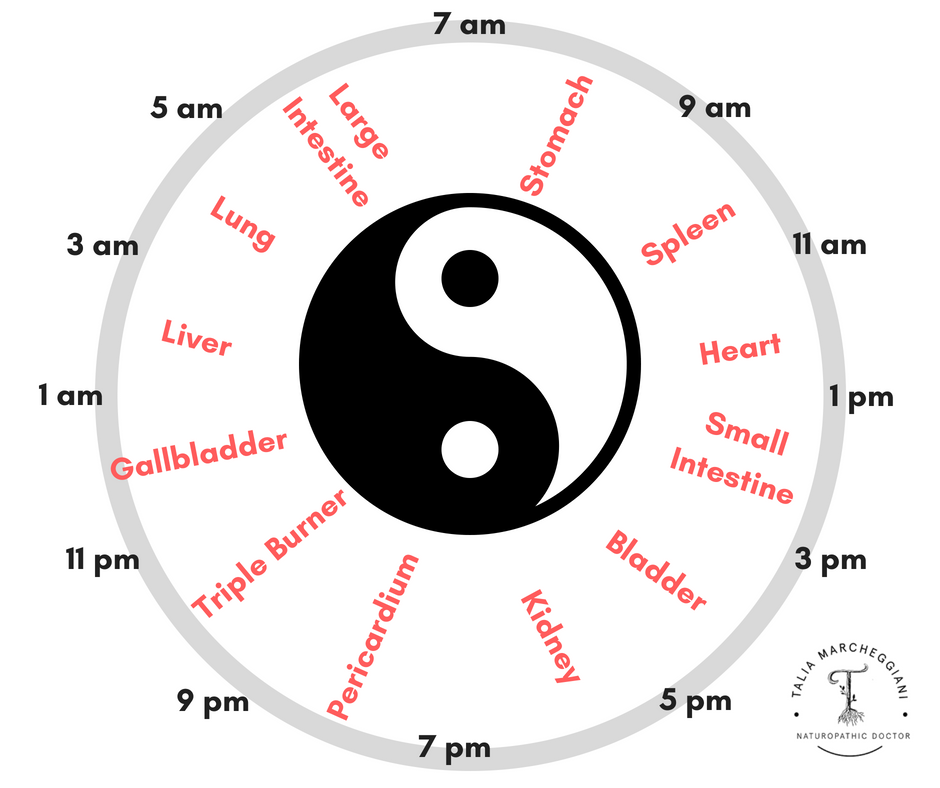 In Chinese medicine, the organs have specific times of activity as well.
In Chinese medicine, the organs have specific times of activity as well.
The stomach is most active from 7 to 9 am, when we eat our breakfast, the most important meal of the day according to Traditional Chinese doctors. The spleen (which in Traditional Chinese Medicine operates much like the Western pancreas) is active from 9 to 11 am, converting the food energy from breakfast into energy that can be utilized by the body.
According to the Chinese organ clock, the liver is active from 1 to 3 am. Individuals with chronic stress, insomnia and irritability, sometimes called “Liver Qi Stagnation”, frequently wake up restless during those early morning hours.
Entraining our circadian clock with environmental cues can help us remain vital by balancing the flow and transformation of yin and yang energies in the body.
Healing the Circadian Clock:
When I work with patients with depression, anxiety and other mental health conditions, or hormonal conditions such as HPA axis dysfunction, one of our goals is to heal circadian rhythms.
This involves coordinating our internal rhythms with the Earth’s night and dark cycle by setting up a series of routines that expose the body to specific zeitgebers at certain times of day.
How to Heal Your Circadian Rhythms
Morning Activities: Increasing Yang with movement, light and food:
1. Expose your eyes to bright light between the hours of 6 and 8 am. This stimulates the SCN and the adrenal glands to produce cortisol, which boosts mood, energy and wakefulness in the morning and can help reset the HPA axis.
2. Have a large breakfast high in protein and fat within an hour of waking. The intake of a meal that contains all of the macronutrients wakes up the liver clock. This activates our metabolism, digestive function, blood sugar regulation, and HPA axis.
Consider eating 3 eggs, spinach and an avocado in the morning. Or consume a smoothie with avocado, MCT oil, protein powder, berries and leafy greens.
Eating a breakfast that contains at least 20 grams of protein and a generous serving of fat will help stabilize blood sugar and mood throughout the day while obliterating night-time sugar cravings.
3. Move a little in the morning. Morning movement doesn’t necessarily have to come in the form of exercise, however, it’s important to get up and start your routine, perhaps making breakfast and tidying, or having an alternate hot and cold shower (1 minute hot bursts alternating with 30 seconds cold for 3 to 5 cycles).
Muscle movement triggers another important peripheral clock that helps entrain our circadian cycle with the day.
4. Turn on lights in the morning, especially in the winter time. Spend time outside during the day, and avoid using sunglasses unless absolutely necessary so that light can stimulate the SCN. Consider investing in a sunlamp for the winter, particularly if you suffer from seasonal affective disorder.
5. Consume most of your supplements in the morning, with breakfast. Taking adaptogens (herbs that help reset the HPA axis) and B vitamins can help promote daytime energy and rebalance our morning cortisol levels. This, of course, depends on why you’re naturopathic doctor has recommended specific supplements, so be sure to discuss supplement timing with her first.
Night Routine: Increasing Yin with dark and stillness:
1. Maintain a consistent sleep and wake time, even on the weekends. Retraining the cycles starts with creating a consistent routine to get your sleep cycle back on track.
2. Try to get to bed before 11pm. This allows the body to reach the deepest wave of sleep around 2 am. It also allows for 7 to 8 hours of continuous sleep when you expose your eyes to bright lights at 6 to 8 am, when cortisol naturally rises. Of course, this sleep routine will vary depending on personal preferences, lifestyles and genetics.
It’s important to first establish a routine that will allow you to get at least 6 hours of continuous sleep a night. If you suffer from chronic insomnia, working with a naturopathic doctor can help you reset your circadian cycle using techniques like Sleep Restriction Therapy to get your body back on track.
3. Avoid electronic use at least an hour before bed. Our smartphones, tablets, computers and TVs emit powerful blue light that activates our SCN, confusing all of our body’s clocks. Blue light also suppresses melatonin release, making us feel restless and unable to fall asleep.
For those of you who must absolutely be on electronics in the late hours of the evening, consider investing in blue light-blocking glasses, or installing an app that block blue light, such as F.lux, on your devices. These solutions are not as effective as simply turning off electronics and switching to more relaxing bedtime activities, but can be a significant form of harm reduction.
4. Fast for at least 2 to 3 hours before bed. Avoid late-night snacking to give the body a chance to rest and to signal to the peripheral digestive clocks, such as the liver clock, that it’s now time to rest and repair, rather than digestive and assimilate more food.
Avoiding food, especially carbohydrate-rich food, at night can also manage blood sugar. A drop in blood sugar is often a reason why people wake in the early hours of the morning, as blood sugar drops spike cortisol, which wake us up and off-set our entire circadian system.
5. Engage in relaxing activities in dim lighting. Turn off powerful overhead lights, perhaps lighting candles or dim reading lights, and engage in at least 30 minutes of an activity that feels restorative and relaxing to you. This might include taking an epsom salt bath, reading a book while enjoying an herbal tea, doing yoga or meditation, or cuddling with a partner.
Taking this time helps us step out of the busyness of the day and signals to the body and its clocks that it’s time to sleep.
6. Take nighttime supplements before bed. I often recommend sleep-promoting supplements like prolonged-release melatonin (which is a powerful circadian rhythm and HPA axis resetter), magnesium or phosphatidylserine, before bed to help my patients’ bodies entrain to the time of day. Talk to your ND about what supplements might be right for you.
If you suffer from chronic stress and mood disorders, do shift work, or are dealing with jet lag, you may need to engage in these routines diligently for a few months to get your circadian cycles back on track.
These practices can also be beneficial at certain times of year: daylight savings time, periods of stress and heightened mental work, and the transition of seasons, especially early Spring and Fall.
Finally, consider working with a naturopathic doctor to obtain and individual plan that can help you reset your body’s rhythms.

by Dr. Talia Marcheggiani, ND | Apr 26, 2018 | Anti-aging, Anxiety, Depression, Detoxification, Diet, Digestion, Endocrinology, Fertility, Gut Microbiome, Hormones, Meditation, Mental Health, Nutrition, Sexual Health, Stress, Women's health
 In order to make sense of the world, people create stories. It is our greatest gift and most fragile weakness.
In order to make sense of the world, people create stories. It is our greatest gift and most fragile weakness.
Boy meets girl, they fall in love, they encounter difficulties that they eventually overcome. It brings them closer. They live happily ever after—the classic love story.
Stress has a classic story too: cortisol, the “stress” hormone, is released during stress. It wreaks havoc on the body. Lowering stress helps lower cortisol.
However, when it comes to human hormones, telling stories in a linear narrative is impossible.
Hormones are signalling molecules in the body. They are produced by endocrine organs, such as the adrenal glands, the brain, and the ovaries. They travel through the bloodstream to impact the expression of genes on distant tissues, which impacts how our bodies function.
Production of norepinephrine in the adrenal glands as a response to stress can make your heart race, your pupils dilate, your hands to shake, and your senses become hypervigilant—when a perceived threat or danger activates the release of this hormone, your entire body pulsates under its influence.
Hormonal stories are hard to fit the human desire for narratives. Their relationships with our genes, bodily systems, receptor binding sites, and each other make their actions too complicated to be described linearly. Instead they act like webs, or tangled networks of intricate connections.
When hormone levels rise in the body, beyond our delicate homeostatic balance, a phenomenon, called “resistance”, can occur. With resistance, cells reduce their responses to the hormones that interact with them.
When telemarketers keep interrupting your dinner at 6pm, eventually you stop answering the phone.
When certain hormones continue to call at the surface of cells, stressing the body’s capacity to respond, our cells simply stop answering.
Many of us ask, “what happens when I pull this thread here?” when learning about one hormone that we’ve blamed all our woes on. We tug the thread, without considering the entire web of connections, and our actions affect the entire system.
Our hormones exist in an ecosystem where everything hums and flows together, as a unit. It’s impossible to lay out explanations for their actions in a linear fashion.
Hormone stories flow like a Choose Your Own Adventure novel—a hallway with many doors that snake down long corridors and meet again, and interconnect.
Go through the door marked “estrogens”, and you encounter serotonin, cortisol, progesterone, insulin, thyroid hormones, leptin, BDNF, dopamine, norepinephrine, and many others.
Hormones are the conductors of your body’s personal orchestra, composed of thousands of musicians, a complex musical score, highly-trained arms, fingers, and mouths manipulating instruments: a million moving parts working together in harmony.
The best we can do to understand the entire interplay is to slow down the action, take a snapshot of it, and to try to understand why these symptoms are occurring in this individual.
Symptoms of Hormone Imbalances
Because hormones affect absolutely every system of our body, I am always attuned to the possibility of hormonal imbalances in my patients.
It helps to look at hormones in terms of their symptom patterns rather than how any one hormone affects us in particular.
Common signs of hormonal imbalance are:
- Fatigue, low libido, restless sleep, depression and anxiety, waking at 2 to 4 am, a high-stress lifestyle, and brain fog might indicate cortisol imbalance.
- PMS – and the more severe related condition, PMDD – infertility, fatigue and low libido, missed and irregular periods may be related to fluctuations in the hormones estrogen and progesterone, or low estrogen and progesterone levels. Many of these symptoms could also be related to estrogen dominance, in which estrogen is either high or normal, and progesterone is low.
- Endometriosis, a family or personal history of female cancers, anxiety and panic attacks, heavy and painful periods, frequent miscarriages, infertility, fibroids, fibrocystic breasts and weight gain around the hips and thighs can indicate estrogen dominance.
- High levels of male sex hormones like testosterone, irregular periods, weight gain, acne, and hair loss may indicate a female hormone condition called PCOS.
- Fatigue, brain fog, difficulty losing weight, puffiness, constipation, dry skin and hair, and low body temperature can be signs of hypothyroidism.
- Symptoms of reactive hypoglycemia, such as feeling dizzy, anxious and shaky between meals, sugar cravings, weight gain around the abdomen, difficulty losing weight, and low morning appetite, night-time carbohydrate cravings, and binge eating can all be related to insulin resistance and poor blood sugar control.
In my naturopathic practice, I see common patterns of symptoms that indicate certain hormonal imbalances.
These patterns often represent vicious cycles where our body is stressed beyond a capacity to balance these interconnected webs of chemical interactions, causing further imbalance.
Cortisol
Speaking of stories, here’s one I hear often.
You wake up in the morning, exhausted. Your brain is in a fog and you don’t feel alive until a cold shower or double espresso knock you out of your stupor.
Things get a bit better once you get moving, but you wonder why your energy never fully bounces back.
You used to play sports in university, you think to yourself. Now just thinking of sports makes you tired.
Is this what getting older feels like? You’re in your 30s.
The days at the office stretch on forever. Concentration and focus are difficult. You see a coworker whose name, you realize with horror, can’t be brought to mind.
You’ve known her for a year. Cynthia? Sylvia? Your brain hurts.
In the afternoon you think longingly of napping, but instead take your place in the long line for coffee and something carb-y like a cookie.
When it comes time for sleep you are either out like a light or find it hard to turn your mind off; you’re tired, as always, but also wired.
Sleep doesn’t feel restful, and you often wake up, sleepless, at 2-4am in the morning.
When your alarm rings a few hours later, the cycle begins again.
Cortisol, one of our stress hormones, has a circadian rhythm. Its levels are highest in the morning, about an hour after waking. Cortisol promotes energy, alertness and focus. It is also a potent anti-inflammatory hormone.
Cortisol is what makes us feel alive in the morning, bouncing out of bed like Shirley Temple and her curls.
Throughout the day our cortisol levels slowly dwindle (unless a major stressor causes them to spike abnormally). They are lowest in the evening, when melatonin, our sleep hormone begins to rise, inducing feelings of sleepiness, preparing us for a night of rest.
 Our modern day society, however, calls on cortisol to perform more than its fair share of work. Cortisol is around when we’re hauling ourselves out of bed after an inadequate night of rest.
Our modern day society, however, calls on cortisol to perform more than its fair share of work. Cortisol is around when we’re hauling ourselves out of bed after an inadequate night of rest.
Cortisol fuels gym workouts, gets us to our meetings on time, allows us to meet deadlines, tolerates traffic jams, responds kindly to tyrannical bosses, and makes sure the kids get to all their after-school events.
Cortisol is made in the adrenal glands, two endocrine glands located on each kidney, in response to signals from the brain that perceive stress in our environments and bodies.
When stress hormones levels are too high we experience a “tired and wired” feeling. During this time we might feel we thrive better under stress: workouts boost our energy, we have a hard time quieting down and we rarely feel hungry.
We might still struggle with weight gain, however, especially the abdomen and face, where cortisol tends to encourage fat deposition.
We might feel tension—tight muscles and shoulders, and body pain, as muscles clench up, preparing to fight or flee.
Chronic stress is associated with high levels of cortisol. We work long hours, late into the night. We go, go, go. This may give us a “high” or it may feel exhausting and depleting.
Many of us can exist in this state for months and even years. Sometimes a compounded stressor such as a divorce, accident, or loss, can tip us over the edge into a depleted, burnt out state.
Burnout, often following a period of prolonged stress, can be associated with low cortisol signalling. Our bodies have simply stopped being able to produce the stress hormones necessary to meet the needs of our daily lives, or glucocorticoid receptors in the brain and body cells, have stopped responding to cortisol.
Just as cell can be become resistant to insulin, they can also become resistant to cortisol. Too much (or even too little) of a hormone can cause cells to start ignoring their signalling, resulting in symptoms of low levels of the hormone in some areas of the body and high levels of the hormone in others.
Cortisol is a complicated molecule. It both encourages the stress response, but also turns it off, when levels reach a certain point.
Often, cortisol levels that are too low result in an impaired stress response, preventing our fight or flight system from properly shutting off—cortisol resistance can lead to further stress hormone disruption.
The result of an imbalance in cortisol, otherwise termed Hypothalamic Pituitary Adrenal (HPA) Axis dysregulation is weight gain, fatigue and brain fog, inflammation and immune system activation, digestive issues, restlessness, impaired sleep, decreased cognitive function, and mental health conditions, such as anxiety and depression.
When cortisol levels are low, the body makes adrenaline and noradrenaline to meet our needs, which often leads to anxiety and feeling shaky and nervous, contributing to symptoms of anxiety.
Cortisol also influences the function of our sex hormones, thyroid hormones, and our blood sugar. Imbalances in any of these other hormonal systems can be a result of an impaired HPA axis.
Cortisol Testing
The two main ways to assess the body’s levels of cortisol are through serum (blood tests) and saliva.
A study found both tests were equal when it came to diagnosing Cushing’s disease, a condition of highly elevated cortisol.
One of the advantages to salivary cortisol testing is the ability to obtain multiple samples in one day to be able to view a patient’s cortisol curve, in which cortisol peaks approximately one hour after waking and declines throughout the day.
The cortisol curve is measured by assessing 4 samples of salivary cortisol taken at 4 key points during the course of one day. It measures free cortisol, which may only represent about 5% of total cortisol in the body.
While salivary cortisol levels can be a good starting point for assessing the cortisol curve, it doesn’t tell us everything about the health of the glucocorticoid receptors or HPA system as a whole.
High cortisol levels may be seen in patients with low cortisol signalling, such as depression, anxiety and chronic fatigue. Errors in obtaining salivary cortisol samples (such as not taking samples at the right time) can lead to falsely low cortisol readings.
In my opinion, this makes symptoms and health history the most valuable tools for properly assessing HPA axis function.
Cortisol and Melatonin
Melatonin, our sleep hormone, also operates on a circadian rhythm. It is released by the pineal gland in the brain and induces sleep. Its release corresponds to a drop in cortisol levels at the end of the day.
That release is impeded by artificial light exposure at night, lack of daytime sun exposure, alcohol, stress, and HPA axis disruption, among other lifestyle and environmental factors.
Melatonin, like other hormones, can be tested for in blood, urine and saliva, but I find more value in assessing for sleep quality and quantity by taking a thorough health history while also restoring a patient’s sleep hygiene and HPA axis regulation.
Many patients with sleep issues can benefit from a trial of supplemental melatonin to see if that helps their sleep. Taking it 2 to 3 hours before bedtime to coincide with the body’s natural melatonin surge and taking a prolonged-release version to promote sleep maintenance are two strategies I use for helping patients sleep better.
Working on sleep and circadian rhythms is also beneficial for restoring HPA axis functioning.
The “Female” Hormones: Estrogen and Progesterone
The most prevalent female sex hormones are estrogen and progesterone. These two hormones eb and flow in distinct ways throughout a woman’s monthly cycle.
Estrogen creates an “M” shape, rising at the beginning of the cycle to its first peak around ovulation, half-way through the cycle. At this time women typically experience their best mood, energy, and motivation, perhaps noticing a rise in libido.
After ovulation, estrogen dips a little bit and then rises, peaking again about a week before a woman’s menstrual cycle is due.
After this, estrogen takes a nosedive, reaching low levels around the time that menstruation begins: Day 1 of the menstrual cycle.
Progesterone, on the other hand is largely absent the first half of the cycle, before ovulation. Then, it begins a steady climb to peak with estrogen, about a week before the arrival of the next period.
After peaking, just like estrogen, progesterone then takes a dip, which stimulates the uterine lining to shed, resulting in menstruation, in which the entire cycle begins again.
PMS and PMDD
My practice is populated by women who experience various forms of grief at different stages of their monthly cycles.
Many of my patients experience PMS, and the more severe PMDD (Premenstrual Dysphoric Disorder)—which is characterized by intense mood swings, irritability, depression, or anxiety, panic attacks and psychosis in the most severe cases— up to two weeks before their periods.
The mood changes in PMS and PMDD are associated with fluctuations in the hormones estrogen and progesterone, which can wreak havoc on our brain chemistry.
Estrogen has a beneficial effect on mood, increasing dopamine and serotonin action in the brain. Dopamine and serotonin are two antidepressant, feel-good neurotransmitters.
Estrogen also increases something called Brain-Derived Neurotrophic Factor (BDNF) a chemical that stimulates the growth of brain cells. This can boost memory, concentration, and cognition, as well as positively influence mood.
Progesterone breaks down into a chemical called allo-pregnenolone, which acts like GABA, a calming neurotransmitter, in the brain. Bioidentical progesterone therapy is often used as a treatment for anxiety and insomnia.
When estrogen and progesterone levels surge and drop suddenly, drastic fluctuations in mood can occur. Cravings for sweets, crying, lack of motivation, or severe anxiety can all occur when hormones drop right before a period is due.
However, elevated levels of estrogen can also be problematic. Estrogen stimulates dopamine, which typically makes us feel good, gives us energy, and helps to motivate us. In genetically vulnerable women, elevated levels of dopamine can cause excess irritability, low stress tolerance, and even mania or psychosis.
Estrogen also slows the recycling of the stress hormones epinephrine and norepinephrine, which can lead to symptoms of acute stress and anxiety, when dysregulated.
This means that dramatic rises and falls in estrogen throughout a woman’s cycle can cause her to feel irritable and anxious one week and unmotivated and depressed the other.
Smoothing out hormonal ups and downs can be a key factor in regulating a woman’s menstrual cycles and soothing her mood and emotions throughout the month.
Perimenopause and Menopause
Perimenopause is characterized by a declining production of the ovarian hormones estrogen and progesterone.
Estrogen levels tend to rise and fall dramatically throughout a woman’s remaining cycles, while progesterone levels tend to stay low.
The result of these changes are symptoms like hot flashes, night sweats, brain fog, fatigue, and depression when estrogen levels suddenly tank, and increased stress and anxiety when estrogen levels abruptly spike.
During this time, cycles may become irregular. Some of my patients comment that their periods are incredibly light one month and the heaviest of their lives another.
Some get periods every few months and some notice increased frequency, even spotting between cycles, or have a full-blown period every two weeks in more extreme cases.
Weight gain tends to drift from the thighs and buttocks to the abdomen. Once pear and hourglass-shaped figures begin to resemble apples.
Fatigue is a common symptom. Women may experience poor sleep due to night sweats from estrogen deficiency, and anxiety from insufficient progesterone.
What a joy, right?
Many of these perimenopausal symptoms are a relatively modern phenomenon, stemming from a dysregulated HPA axis.
After cessation of periods, it’s the job of the adrenal glands to take over sex hormone production. However, if the HPA system is preoccupied with organizing a stress response, this can affect the production of other hormones.
Impaired Estrogen Clearance
Many women struggle with symptoms that are related to relatively high levels of estrogen, often caused by impaired estrogen clearance.
These conditions include heavy and painful periods, fibrocystic breasts, or conditions like fibroids or endometriosis.
Chronically elevated estrogen levels also include a risk of certain hormone-associated cancers, such as breast cancer.
These women may experience irritability and anxiety through estrogen’s interaction with stress hormones, and also from a relative deficiency in progesterone.
A relatively high level of estrogens compared to progesterone is termed “Estrogen Dominance”.
 Estrogen is normally cleared through the digestive system: the liver and intestines.
Estrogen is normally cleared through the digestive system: the liver and intestines.
A sluggish and congested liver causing a slower rate of hormonal clearance (think of it like a clogged drain), an increase in environmental toxin exposure, or an overconsumption of alcohol, can slow the liver’s ability to regulate estrogen levels in the body.
Constipation and a dysbiotic gut can also impair estrogen clearance.
Symptoms of estrogen dominance include stubborn weight gain, typically around the hips and thighs, heavy and painful periods, tender and painful breasts, fibrocystic breasts, endometriosis, uterine fibroids, acne, cyclical mood swings, especially premenstrual anxiety and panic attacks, and irregular menstrual cycles.
Low Progesterone
Aside from impaired estrogen clearance, another pattern of estrogen dominance is low progesterone.
In this case, estrogen levels are normal or even low (as in the case of menopausal or perimenopausal women). However, an even lower progesterone level still results in a pattern of relative estrogen dominance.
This can cause some of the same symptoms as excess estrogen (anxiety, irritability, heavy and painful periods, weight gain, PMS, fibroids, fibrocystic breasts, etc.).
Low progesterone can also be a culprit in unexplained infertility or early term miscarriage, as progesterone maintains the uterine lining in pregnancy.
Progesterone is released from the ovaries after ovulation. Lack of ovulation, therefore, is a primary reason for low progesterone levels. Anovulatory cycles can occur in women with polycystic ovarian syndrome, women with high levels of physical and emotional stress, or women entering menopause.
Some progesterone, however, is also made in the adrenal glands, where it can be eventually turned into cortisol, aldosterone (a steroid hormone involved in salt-water balance in the body) and androstenedione (a male sex hormone), eventually making testosterone and estrogen.
Women with high cortisol demands due to chronic stress may shunt the progesterone made in their adrenal glands to producing other hormones that support the stress response.
Not only can stress alter ovulation and fertility through various other mechanisms, it can also rob the body of progesterone, directing any progesterone made towards cortisol production.
Testing Estrogen and Progesterone
Estrogen and progesterone can be tested reliably in saliva, blood and urine.
Month long salivary hormone testing of estrogen and progesterone can be an easy and effective way to track the eb and flow of these hormones throughout a women’s menstrual cycles.
In this test, women obtain a saliva sample every 3 to 5 days for the duration of the month to track how estrogen levels corresponds with progesterone and how both hormones rise and fall.
In my practice, however, I often start by running blood tests. I test hormones on day 21 (of a 28-day cycle) to coincide with progesterone’s peak. This can help us calculate the progesterone to estrogen ratio and establish whether the cause of estrogen dominance symptoms is high estrogen or low progesterone.
Blood tests offer the option of looking at estrone, which is a more problematic form of estrogen, as well as estradiol (the most common, metabolically active estrogen in the body). In blood we can also look at LH and FSH, two hormones produced in the brain and ovaries that orchestrate ovulation.
FSH tends to be high in women in menopause or perimenopause, while LH tends to be elevated in women with Polycystic Ovarian Syndrome (PCOS).
Dried urinary metabolite testing, or DUTCH, is an effective way to understand how hormones are broken down and processed by the body. Looking at the entire hormone breakdown pathway provides a more in-depth look at the complexity of hormones in a woman’s cycle, and can guide treatment in specific, useful ways.
The “Male” Hormones: Testosterone
Polycystic Ovarian Syndrome (PCOS) is one of the most common causes of infertility (and the most common endocrine disorder) in women of reproductive age. It affects about 10% of menstruating women.
PCOS is a collection of various symptoms and complex hormonal causes. However, it is characterized by missed periods, anovulation, male-pattern facial hair growth, especially on the upper lip, chin, breasts and abdomen, and the presence of cysts on the ovaries.
Other common symptoms of PCOS are weight gain, estrogen dominance, male-pattern hair loss (on the crown of the head), insulin resistance, infertility, and acne, especially hormonal cystic acne on the jawline.
PCOS is characterized by elevated levels of testosterone, a male sex hormone, or “androgen”, on blood work.
Acne, weight gain, infertility, and hair loss are the main symptoms that bring women with PCOS into my office.
PCOS is a complex process that involves an overproduction of testosterone in the ovaries coupled with insulin resistance. Therefore, balancing blood sugar through diet and lifestyle can have a major impact on symptoms.
The conventional treatment for missed or absent periods is oral contraceptives, which of course doesn’t treat the underlying cause of anovulation. That’s why women with PCOS often seek naturopathic and functional medical solutions to treat the root cause.
Testing for PCOS
When I meet a new patient with PCOS, I often test her blood for estradiol and progesterone levels at Day 21 of her cycle. A very low progesterone level may indicate that she has not ovulated that cycle.
We also test LH and FSH. A high LH:FSH ratio can be indicative of PCOS even if cysts are not present on an ovarian ultrasound.
Other important tests that are often ordered are free testosterone and DHEA-S, another male hormone made in the adrenal glands.
Glucose control and insulin resistance can be assessed by looking at fasting blood glucose, fasting insulin and HbA1c (a marker that looks at long-term glucose control).
Prolactin, another hormone released by the pituitary gland, can sometimes be elevated in anovulatory women with PCOS.
A 4-point salivary cortisol test may be useful in women with PCOS who are also experiencing symptoms of cortisol dysregulation, which can contribute to insulin resistance and affect ovulation and hormone regulation, particularly progesterone production.
Prolactin
Prolactin is a hormone released by the pituitary gland to promote milk production after child birth.
However, some women will have elevated levels of prolactin in blood, despite not currently pregnant or breastfeeding.
Called hyperprolactinemia, elevated prolactin may be a cause of anovulation, mimicking some symptoms of PCOS and menopause, including hot flashes, absent or irregular periods, infertility and even milk discharge from the breasts.
Hyperprolactinemia may be caused by low calorie diets, liver issues, hypothyroidism, and issues with the pituitary gland itself.
Prolactin can be tested in blood. If levels are elevated, an MRI must be conducted to rule out a physical issue with the pituitary gland, such as a tumour.
Oxytocin
Oxytocin is a hormone produced in the brain and secreted by the pituitary. It aids in childbirth. Also termed the “love hormone,” it’s associated with feelings of intimacy and connection.
While high and low levels of blood oxytocin can be possible in men and women who are not pregnant or breastfeeding, the clinical applications of it are not fully known.
Thyroid Hormones
The thyroid, a butterfly-shaped gland on our neck, is the master thermostat of the body, controlling heat and metabolism. It pumps out thyroid hormones T4 and T3, which tell cells to burn fuel, creating energy and heat.
Because our thyroid hormones interact with the cells in every body system, symptoms of hypothyroidism, or low thyroid function, can be incredibly diverse.
Common symptoms of hypothyroidism are weight gain or inability to lose weight, fatigue and sluggishness, brain fog, hair loss, low body temperature, constipation, dry skin and hair, puffiness, infertility, and altered menstrual cycles, such as missed periods or heavy periods.
Aside from autoimmunity, other causes of low thyroid function can be HPA axis dysregulation and chronic stress, a very low calorie or very low carbohydrate diet, sudden weight loss, a deficiency in nutrients needed for thyroid function such as iron, zinc, iodine and selenium, and a body burden of environmental toxins such as heavy metals.
Testing Thyroid
To assess thyroid function, conventional doctors will test a hormone called Thyroid Stimulating Hormone, or TSH. TSH is not a thyroid hormone, but a hormone made in the brain that urges the thyroid to pump out the thyroid hormones T3 and T4. It gives doctors an indirect measure of thyroid regulation.
When TSH levels are high, this suggests that thyroid function is sluggish; the brain needs to send a louder signal to get an unresponsive thyroid to work.
However, TSH is only a periphery marker of total thyroid function, not giving us the whole picture. Also, TSH ranges on conventional lab tests may fail to pick up some cases of subclinical hypothyroidism or impending cases of autoimmune thyroid conditions, otherwise termed Hashimoto’s Thyroiditis, which is the most common cause of hypothyroidism.
To properly assess thyroid function in someone with symptoms of thyroid dysfunction, a slightly elevated TSH, or a family history of Hashimoto’s, I will order a thyroid panel: a blood test measuring TSH as well free thyroid hormone (T3 and T4) levels.
It’s also important to assess for autoimmune thyroid conditions by testing for anti-thyroglobulin and anti-thyroperoxidase antibodies. Both of these antibodies, when elevated, suggest the presence of an autoimmune thyroid condition.
Insulin
Some of the most common hormonal dysfunctions I see in my practice are insulin resistance and reactive hypoglycemia: blood sugar imbalance.
These issues often lie at the heart of other hormonal imbalance patterns, such as irregular menstrual cycles or HPA axis dysregulation.
When we eat, glucose enters our bloodstream, providing fuel for our cells. Insulin helps our cells access this hormone, spiking with each meal.
The higher the meal is on the glycemic index (i.e. the more sugar or refined carbohydrate it contains), the higher our post-meal blood sugar and insulin spikes will be.
Without insulin, we would slowly lose energy and die, unable to get precious glucose into our cells. Individuals with type I diabetes cannot make insulin. They must inject it daily to keep their cells fuelled and blood sugar stable.
For the rest of us who do make insulin, large blood sugar spikes after a meal can be problematic.
Insulin is a storage hormone. It helps energy get into cells, and it helps build muscle and brain cells, but it also blocks the breakdown of fat cells, blocking weight loss.
Insulin also drives down blood sugar levels. When blood sugar rises too quickly after a meal, a large insulin response can drop blood sugar levels too drastically, causing reactive hypoglycemia, or feeling “hangry” (hungry, angry, irritable, tired, light-headed, weak and dizzy) in between meals.
Individuals who experience hypoglycemia feel irritable, shaky, dizzy and anxious between meals. They often suffer from anxiety and panic attacks, and feel hungrier at night.
They may wake up in the middle of the night, as their bodies are unable to go 8 hours (the length of a decent night’s sleep) without food. This causes them to wake up, restless and perhaps anxious, in the early hours of the morning.
These individuals, paradoxically, rarely feel hungry at breakfast time.
I often see anxious patients wake from a restless sleep and toss back only a coffee in the morning, skipping breakfast due to slight morning nausea.
At 10 am, feeling ravenous and shaky, they might scarf down a high-glycemic bagel or croissant. Later on, they’ll enjoy a light lunch—maybe a sandwich—often feeling foggy and lightheaded after eating it.
At 2 to 4 pm, they may feel like an afternoon nap, instead indulging in a coffee and sweet treat to buy them some energy for the remaining hours of the work day.
Finally, after enjoying a larger dinner once they get home, they find themselves snacking all night long. Their bodies are finally urging them to ingest the nutrients they were lacking throughout the day.
They then fall into bed, feeling full, restless and wired, and the cycle begins again.
When our blood sugar falls, we not only feel hangry, weak, and crave processed carbs, our HPA axis also gets stimulated.
Cortisol, a glucocorticoid, can help our body control blood sugar, bringing it into the normal range after insulin sends it tanking too low.
This drop in blood sugar, therefore, needlessly triggers a stress response from the adrenal glands, which can further worsen anxiety, HPA axis dysregulation, and glucocorticoid resistance.
When blood sugar and insulin are spiked repeatedly for days, months, and years on end, cells stop responding attentively to insulin’s signal. Like our response to a pesky telemarketer, cells eventually stop picking up the phone when insulin calls.
However, cells still need insulin. More and more insulin must be released to trigger the same response from insulin resistant cells. This makes cells even more resistant, as they require even more insulin release the next time blood sugar rises to get glucose into the cell for fuel. And so the cycle becomes vicious.
Elevated insulin levels cause inflammation, fat gain, fatigue, depression, reactive hypoglycemia, and HPA axis dysregulation. The more resistant our cells become to insulin, the more cortisol must be called on to maintain blood sugar levels.
PCOS is also characterized by higher insulin levels. This prevents ovulation, causing infertility and female hormone imbalance.
When insulin resistance persists, type II diabetes, where the body is no longer able to keep blood sugar in a safe range, develops.
Type II diabetes is characterized by chronically high blood sugar—which poses a danger to small blood vessels, and is a potent inflammatory condition, increasing the risk of heart disease—and elevated insulin.
It affects almost 10% of the adult population and is the 7th leading underlying cause of death in North America, costing 350 billion dollars a year to manage in the United States alone.
Insulin-related weight gain can affect female hormones, as fat cells make estrogen in the body, leading to estrogen dominance.
Insulin also interacts with a hormone called leptin, which is created by fat cells in response to calorie intake. When body fat levels get too high, cells can become leptin resistant. The body no longer senses dietary calorie intake, leading to increased hunger. This exacerbates the problem of weight gain and insulin resistance.
Testing for Insulin Resistance
When I meet a patient who is presenting with stubborn weight gain, estrogen dominance and stress, I assess their blood for insulin resistance by looking at blood levels of fasting insulin and fasting glucose.
With these two values a calculation that measures insulin resistance, called the HOMA-IR, can be performed. This can give us a baseline measure of how well the body is compensating to control blood glucose.
I also run HbA1c, which looks at glucose levels over 3 months. I will often run a blood cholesterol panel, and inflammatory markers, such as CRP.
Insulin resistance often puts all of our hormones on a rollercoaster, which becomes very difficult to get off of unless we prioritize the diet and lifestyle interventions that address blood sugar control.
Assessing Hormones
When presented with a patient suffering from a complicated symptom pattern, I begin by taking a thorough health history in which we investigate:
- Energy levels,
- Sleep quantity and quality,
- Mood and mental health history,
- Period health history,
- Family history,
- Dietary intake and exercise,
- Health risk factors like smoking, alcohol use, and past health history.
Depending on how clear the patient’s symptom picture presents, we may opt to make some changes before testing, to gauge their body’s response to an increase in nutrient intake.
Then, if necessary, I will order a comprehensive blood work.
Blood testing might include a thyroid hormone panel, and an in-depth look at female hormones, fasting insulin and fasting blood glucose, and other markers that help us assess health, such as cholesterol and inflammatory markers, or nutrient levels.
Patients requiring a more comprehensive view of their cycles may opt for month-long salivary testing. Others may opt for a dried urine test that looks at hormonal breakdown in the body.
A Sample Case
Jenny (name changed for privacy) came to me feeling fatigued and anxious.
She had suffered from anxiety periodically as a teen, but now at age 46 she was experiencing bimonthly panic attacks that seemed to occur cyclically; the panic would come around ovulation and premenstrually.
It was hard to tell, however, because Jenny also claimed that her periods were “all over the place”. One month they were heavy and painful, causing her to take time off work, crouched on the bathroom floor in agony. Other months she barely noticed them, experiencing some light spotting, if anything at all.
Very troubling to her was her major mood volatility, which she described like a “switch” that would suddenly flip on or off, causing her to breakdown at work or pick fights with her family.
Then, almost as suddenly, the cloud would lift and she would be her cheerful, friendly, loving self again.
It was maddening, both to her and those living with her during these darks times, she said.
She also noticed disrupted sleep and weight gain around the abdomen, which seemed to ignore her intense workouts and strict dietary regime.
Jenny was highly accomplished at her high-pressure job and commented that she thrived on being busy and achievement oriented.
I tested Jenny’s blood estradiol, estrone, progesterone, LH, and FSH levels one week before her next expected period, had her fill out a weekly diet diary, and gave her some recommendations about sleep and supplement intake.
Jenny’s blood revealed elevated FSH, indicative of impending menopause (FSH encourages the ovaries to ovulate, as TSH encourages the thyroid gland to make thyroid hormone). She also had low estradiol, and low progesterone, but elevated levels of estrone, the more problematic of the estrogens.
According to her labs and history, Jenny was experiencing estrogen dominance and perimenopause. Many of her symptoms were stemming from elevated estrone, low progesterone and a disrupted HPA axis.
Together, we worked on her diet to provide her body with the nutrients needed to make hormones and to support her brain, mood and adrenal glands.
We used herbs and dietary nutrients to promote liver estrogen clearance and to support Jenny’s adrenal glands.
We addressed the stress in her life, encouraged relaxation, and made sure her body was supported in its ability to make and respond to cortisol.
After a few months, Jenny reported a reduction in hot flashes, better sleep and feeling calmer. She had a reduction in her waist line and better energy and mood.
Our hormones, when imbalanced, can cause vicious cycles in the body that trap us in a state of worsening imbalance.
Through correctly assessing these common hormonal patterns through a health history and appropriate testing, and then making diet, lifestyle and supplement suggestions addressed at stopping these cycles, naturopathic doctors can address underlying hormonal issues that might be causing these complex and troublesome patterns of hormone disruption.
